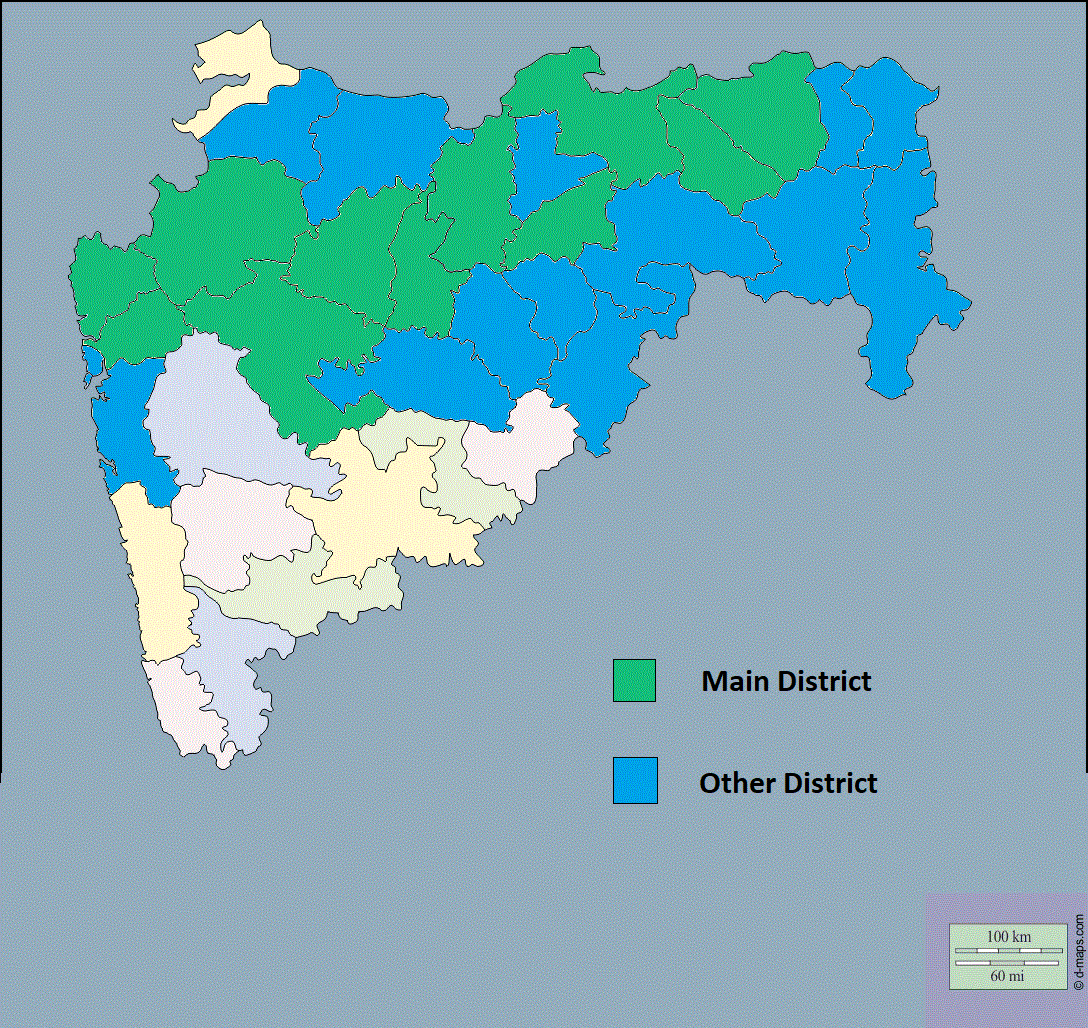
The Expressway
The aim of the Hindu Hrudaysamrat Balasaheb Thackeray Maharashtra Samruddhi Mahamarg is to create connectivity to the last mile with best public transport facilities for quick and easy movement of people and goods. The expressway will enable a large population to have easy access to major centers in Maharashtra for a wide range of self-employment and wage employment opportunities, business, trade, education, health care and other necessary services.

Main 10 Districts
Nagpur
Wardha
Amravti
Washim
Buldhana
Aurangabad
Jalna
Ahmednagar
Nashik
Thane
Other 14 Districts
Chandrapur
Bhandara
Gondia
Gadchiroli
Yawatmal
Akola
Hingoli
Parbhani
Nanded
Beed
Dhule
Jalgaon
Palghar
Raigad
The expressway will pass through ten districts, namely Nagpur, Wardha, Amravati, Washim, Buldhana, Aurangabad, Jalna, Ahmednagar, Nashik and Thane. It will connect Nagpur to Mumbai and have direct connectivity with the country’s largest container port – JNPT. This will enhance EXIM (export-import) trade of the state. Inter-connecting highways and feeder roads would be constructed to connect all important cities and tourist places along this route. This will connect another fourteen districts, namely Chandrapur, Bhandara, Gondia, Gadchiroli, Yavatmal, Akola, Hingoli, Parbhani, Nanded, Beed, Dhule, Jalgaon, Palghar and Raigad. In this manner, a total of twenty-four districts in Maharashtra will be connected via this expressway.
Major tourist destinations in the state will also be connected to the expressway.
Key features of the Hindu Hrudaysamrat Balasaheb Thackeray Maharashtra Samruddhi Mahamarg
-
The expressway will be 701 km long, directly connecting ten districts, twenty-six talukas and around 392 villages.It will have a speed limit of 150 km which will bring Nagpur and Mumbai within 8 hours reach. Thus, travel time from Mumbai to Aurangabad will be 4 hours and from Aurangabad to Nagpur, another 4 hours.It will connect several industrial areas, the Delhi-Mumbai Industrial Corridor (DMIC) , the Western Dedicated Freight Corridor (WDFC), dry ports of Wardha and Jalna and Mumbai’s JNPT.The expressway, having a total width of 120m with a central median of 22.5m will follow the international standards of design. There will be 8 lanes, 4 on each side. In case there is a need to increase lanes on either side, a provision has been made in the center of the expressway. Thus, no more land will be required for expansion in future.It will have service roads on both sides that will connect through underpasses.It will have around 50+ flyovers, 24+ interchanges, more than 5 tunnels, 400+ vehicular and 300+ pedestrian underpasses provided at strategic locations. These underpasses and flyovers will be beneficial to those vehicles leaving or joining the expressway without disturbing the traffic flow. It will also benefit local citizens to go about their travel without any hindrance and also prevent accidents.Extensive landscaping, tunnel lighting, bridge beautification, improved street lighting and digital signage will be used throughout the length of the expressway.Maximum locally available material, fly ash and plastic will be used to construct the expressway wherever possible. Rain water will also be harvested from the expressway.The entry and exit at the expressway will be managed and toll will be charged based on the distance travelled. The toll collection is proposed to be automated.The expressway will be a Zero Fatality Mahamarg; it will have CCTV surveillance and free telephone booths at every 5 km to allow reporting in case of any accidents and emergencies.Utility Mahamarg along the expressway will be provided for OFC cables, gas pipelines, electricity lines, etc.In case of any emergency, natural disaster or in a war-like situation, a facility to land an airplane on the expressway is proposed by temporarily converting the expressway to a runway.
Still Have a Question?

Maharashtra State Road Development Corporation Ltd
Registered Office Address:
Nepean Sea Road, Priyadarshini Park, Mumbai 400036, Maharashtra,India.
Corporate Office Address :
MSRDC office Premises, K. C. Marg, Near Lilavati Hospital, Bandra (W), Mumbai-400050, India.
IMPORTANT LINKS
ABOUT
Hindu Hrudaysamrat Balasaheb Thackeray Maharashtra Samruddhi Mahamarg aims at providing an impetus to the overall development of rural areas by attracting domestic and foreign investment.
- 1800 233 2233
- 8181818155
- +91- 22 26417893
- info@msdrc.org
MAP